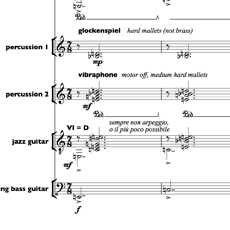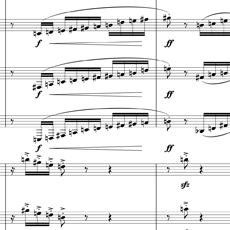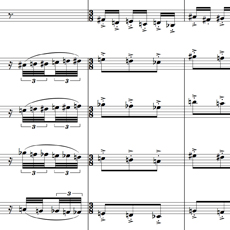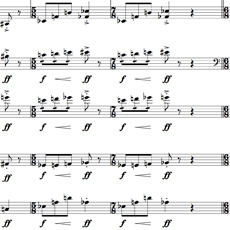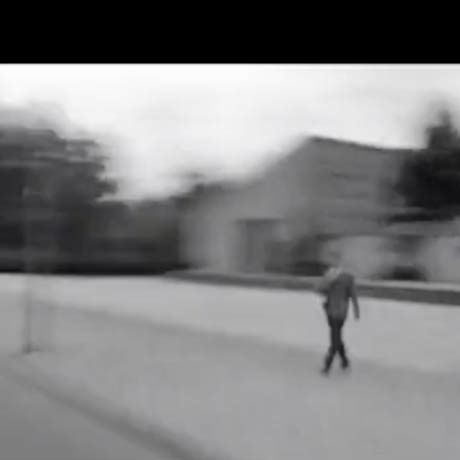Geschwindigkeit
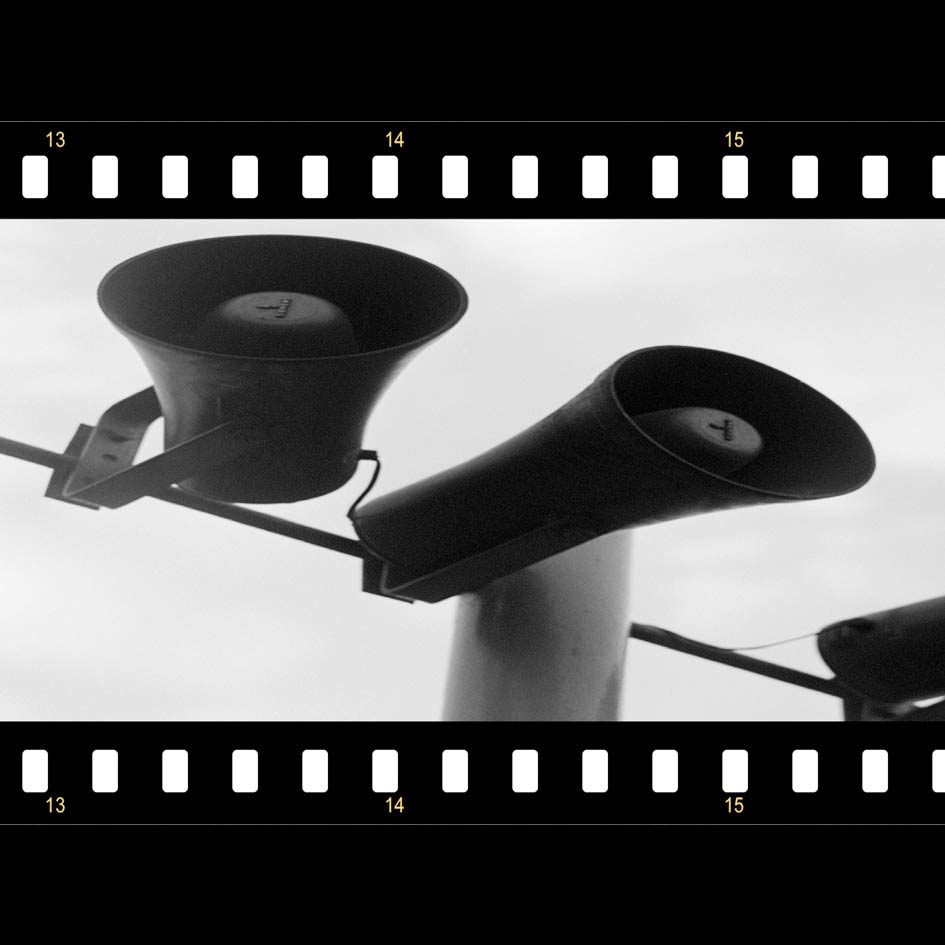
for big band (2017)
with or without the 1963 short film of the same name by Edgar Reitz
15 minutes | no.52
Geschwindigkeit – German for “Velocity” – may be performed as an autonomous composition, or in combination with the short film of the same name by Edgar Reitz.
Made in 1963, this nonverbal black-and-white motion picture is a cinematographic exploration, ignoring traditional techniques of narrative filmmaking. It eschews a traditional scenario or screenplay in favour of a score, as if a musical composition. Containing a total of 347 consecutive shots, it dictates concurrent parameters, such as image description, image dynamic (movement of the camera and/or the camera operator), speed, panning, intensity, contrast, brightness, amount of frames, and ultimately, duration, measured down to the millisecond.
The film opens with tranquil elements shot in nature: the glistening surface of the sea, the rigidity of cairns and quarries, foliage slowly waving its leaves. Gradually more rapid movement is introduced: a falling stone, birds flying by, waves crashing on rocks. All of a sudden a gasholder appears; from that moment the film confronts the viewer with bridges, harbours, cranes, construction sites, and countless other industrial images. Once we enter this world of technological innovation, there seems to be no way back. Both the rhythm and the tempo of the images get faster and faster, to the point that a “long ride in a fast machine” gets squeezed into a mere few seconds. The film ends with the ironic consequence of uncontrollable acceleration: ultimately the images flash by so quickly that they become completely static. At this point our eyes and brains fail to register details: in the end we are left with the blinding white radiance of the empty projection screen.
Geschwindigkeit focuses on the notion of velocity in a post-war era, and, more specifically, on the increasing awareness of accelerating time. Of all disciplines in art, the medium of film – because of its technical possibilities – and that of music are by far the most ideal and convincing means to an end in depicting speediness. To combine the two results in a sensory experience that is greater than the sum of its parts.
Scoring
soprano sax 1, soprano sax 2, alto sax, tenor sax, bass clarinet
picc trumpet, trumpet 1-2-3-4
trombone 1-2-3-4, bass trombone
marimba (also glockenspiel & bongos), vibraphone
piano, jazz guitar, bass guitar
written for
David Kweksilber Big Band
with financial support from
Performing Arts Fund NL
dedicated to the memory of
my father
première
31 December 2017
BIMHUIS, Amsterdam (Netherlands)
David Kweksilber Big Band
Richard Rijnvos (conductor)
Video
31 DEC 2017
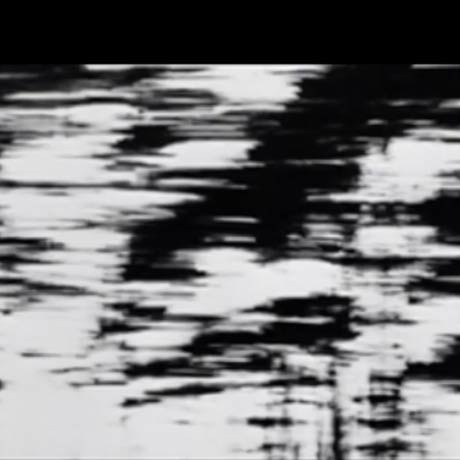
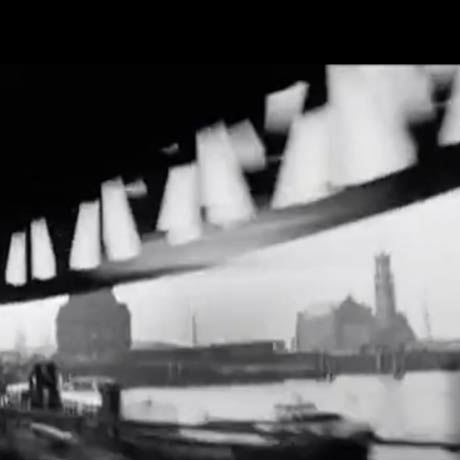
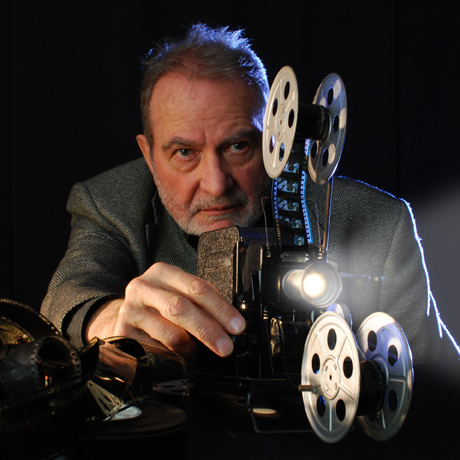
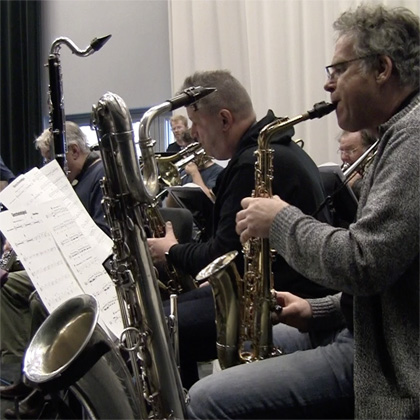
Press
Es sind fast sechzig Jahre seit diesen Erlebnissen vergangen. Geschwindigkeit ist inzwischen ein Klassiker des experimentellen Filmkunst geworden, der immer noch in vielen Ländern gespielt wird und große Beachtung in der Welt der Neuen Musik gefunden hat. Es gibt neben der Originalfassung [...] weitere Vertonungen. [...] Eine [...] sehr wirkungsvolle Neuvertonung stammt von dem niederländischen Komponisten Richard Rijnvos aus dem Jahr 2017. Rijnvos setzt für seine Komposition, die sich sehr genau an die Filmpartitur hält, sogar eine Big Band ein. Das Engagement von Norbert Handwerk, dem ich diesen Film verdanke und der mir in den folgenden Jahren noch viele große Aufgaben anvertraute, bleibt einmalig in meiner Lebensgeschichte.
Edgar Reitz Filmzeit, Lebenszeit - page 241 - Rowohlt, Berlin - 2022
Audio Fragments
Performance
David Kweksilber Big Band
Richard Rijnvos - conductor
recording
31 December 2017, BIMHUIS, Amsterdam (NL)
(reproduced with permission)
Geschwindigkeit
excerpt 1
Geschwindigkeit
excerpt 2
Geschwindigkeit
excerpt 3
